The Great Depression was a perfect storm of problems that struck the country and the entire world. It happened at a time when our leaders, our social infrastructure, and our economic systems weren’t capable of coping.
After the Great Depression and World War Two, we sort of gave in to this notion that we’d learned our lessons, and we weren’t going to let anything like that happen again. Then the 2008 “Great Recession” hit, followed later by the dumpster fire that was 2020.
While we might have learned a few things along the way, we are clearly always going to be at risk of another catastrophe. So, I thought it would be wise to look at some of the lessons people made before the Depression and what lessons we might be able to take from it today.
Over-Reliance on Banks
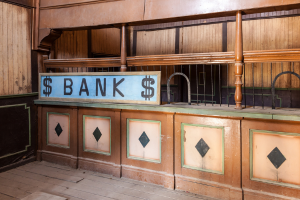 In the years leading up to the Great Depression, people kept most of their savings in banks.
In the years leading up to the Great Depression, people kept most of their savings in banks.
Many people were also over-leveraged with mortgages or other lines of credit they’d foolishly sunk themselves into during the “Roaring 20s.”
When banks started failing in the early days of the Great Depression, millions of people lost their life savings. Deposit insurance and concepts like the FDIC didn’t really exist back then, so people were out of luck with no backup plan.
Lesson For Today
With an FDIC limit of $250,000, there’s some security. However, anything over that limit in any one category is still capital you should consider “At Risk” if there were to be another Great Depression.
To insulate yourself against a bank default, it’s best to diversify your financial holdings by spreading savings across different institutions and investing in tangible assets. This could be things like purchasing land, precious metals, or goods with inherent value.
Something else you should do is start making a food stockpile. Here you will discover exactly how to build a long-lasting stockpile that needs no refrigeration. It starts with a complete stockpile that you can eat from morning, lunch, and dinner for three months. Then you’ll have another one for six months and another for a full year.
It’s also wise to stock up on things that have barter value like ammunition, survival gear, batteries, MREs, dried foods, and water purification devices. That way if the banks do catastrophically collapse, or currency is massively devalued, you still have things of value to trade.
Comfortable Carrying Debt
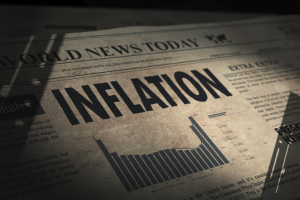 During the Roaring 20s people got comfortable carrying a lot of debt, which directly contributed to the financial instability component of the Great Depression.
During the Roaring 20s people got comfortable carrying a lot of debt, which directly contributed to the financial instability component of the Great Depression.
Individuals, farms, small businesses, and corporations all borrowed money foolishly.
The widespread borrowing of stocks and other investments compounded this overleveraging. When the stock market finally did crash individuals and businesses were left with unpayable debts.
Lesson For Today
Do whatever you can to avoid unnecessary debt. Especially any form of debt that involves speculative borrowing.
Instead, focus on building an emergency fund that you can always have easy access to if you’re hit with dire financial times. Try to keep a significant amount of funds in a high-yield money market savings account of a high-interest CD.
Related: Money Saving Tips From Real Survivors Of The Great Depression
If you are carrying debt, prioritize paying down high-interest loans. This will give you more savings in the long term, and you can then move into those higher-interest savings accounts and CDs.
Monoculture & Urban Dependency on Food Infrastructure
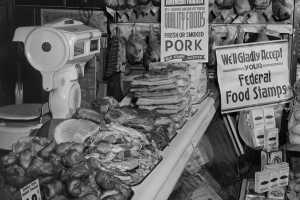 In the decades leading up to the Great Depression, many farm families relied on single-crop “Monoculture” farming practices.
In the decades leading up to the Great Depression, many farm families relied on single-crop “Monoculture” farming practices.
Most family farmers grew just one thing like wheat, corn, or barley, or raised only one type of animal like beef, pork, or chicken.
At the same time, most urban areas relied on food infrastructure systems to keep grocery stores and distribution centers properly stocked. When the financial component of the Great Depression hit, many national and regional supply chains collapsed. This left millions of people living in cities without access to food, even when it was available.
Food shortages were then made worse when poor farming practices, monoculture, and extreme weather patterns led to the Dust Bowl. This sort of triple whammy made it hard to produce food, and even when it was available, the infrastructure wasn’t stable enough to easily get it into urban areas. Leading to widespread food scarcity that lasted throughout the Great Depression.
Lesson for Today
While farming practices, irrigation, and the use of windrows have prevented a new Dust Bowl, our agricultural production system is still overly reliant on monoculture. When widespread drought affects a region, the type of crop being grown there inevitably skyrockets in price. Causing food prices everywhere to go up.
Growing a garden and learning some depression era recipes with what the garden produces will go a long way toward reducing your dependence on modern food infrastructure. Learning how to preserve the food you grow, and stockpiling non-perishable foods, through techniques like canning, dehydrating, and fermenting is also important. Saving heirloom seeds ensures you can sustainably source vegetables all year round.
⇒ This Hidden Survival Garden Will Provide An Unlimited Supply Of Food When SHTF
Keeping a select number of animals will also give you protein sustainability. This could be as simple as a half-dozen laying hens, or ducks. A few goats ensure you have access to dairy. If you have the land available, keeping pigs or a small herd of cattle will ensure year-round access to protein, should the next Great Depression hit.
A Lack of Self-Sufficient Skills in Urban Areas
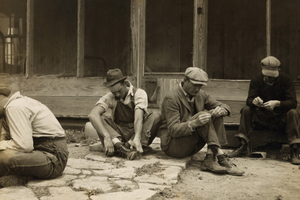 The Roaring 20s, right before the Great Depression, coincided with the beginning of mass urbanization.
The Roaring 20s, right before the Great Depression, coincided with the beginning of mass urbanization.
Many people left the farms and agrarian lifestyles behind to live in cities where they could simply purchase goods and services. Most of them only had a single skill that applied to their job.
Related: How To Stockpile Lard, The Calorie Rich Survival Food Of The Great Depression
When unemployment surged in the early days of the Great Depression, many people lacked the self-sufficient skills to grow food, repair items, mend clothes, or even barter. This created a displaced workforce of unskilled laborers. Many of them lacked the physical fitness to work heavy labor jobs.
Lesson for Today
Practicing your self-sufficiency skills like gardening, basic carpentry, vehicle maintenance, sewing, basic electronic repair, and camping gives you a leg up. Not only will your life be more sustainable. You’ll be able to save money you would have otherwise spent in stores. Not to mention giving you access to items that you can trade, for what you need should another Great Depression strike.
I would also note that practicing these self-sufficiency skills and maintaining a better level of physical fitness will also make it easier for you to handle the rigors of a labor job. Should you need one?
In the Great Depression, those who did manage to find work often lost it within the first few days, because they lacked the basic physical fitness to keep doing it!
In today’s world, self-sufficiency is an invaluable skill. People who could provide for themselves, like small-time farmers and homesteaders, were more resilient during challenging times. The Self-Sufficient Backyard serves as a valuable resource for those who want to be self-reliant. It offers practical advice and knowledge to help you become independent in crucial areas like food, water, and heating.
Devaluing the Importance of Community Networks
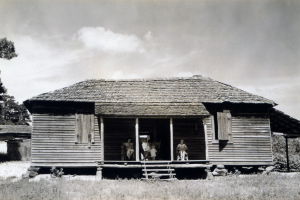 The rise of urbanization leading up to the Great Depression also fractured many of the community-based social networks that people had relied upon for decades. This led to social isolation or lack of community connections, which meant many families had no support systems to reach out to during hard times.
The rise of urbanization leading up to the Great Depression also fractured many of the community-based social networks that people had relied upon for decades. This led to social isolation or lack of community connections, which meant many families had no support systems to reach out to during hard times.
The result was that more families were forced to rely on public assistance programs when community resources and the help of neighbors could have been available. This was compounded by the fact that it took the government a long time to develop functional public assistance programs. Forcing people to compete for resources when they could have been cooperating to create them.
Lesson for Today
While self-sufficiency is important, you also need to avoid social isolation. Build strong relationships within your local community. Support networks can offer resources, skills, and emotional backing during crises.
This might include things like joining a local community club, or church group. Taking part in community events and participating in local charities. The underlying goal is to connect with people in the community around you to form some degree of a healthy in-person relationship with them. Social media connections largely don’t count in hard times. These people can merely ghost you or unfriend you, as you both have minimal interpersonal connection.
I would also look at communities that have proved over the years to be strong and completely independent. The best example is the Amish community and you can learn a lot from them. This is a great resource where you can discover how to be prepared for the next crisis, whatever that may be.
Final Thoughts
The Great Depression was rife with critical lessons about society, finance, agricultural infrastructure, and the dysfunction hiding in the cracks of our civilization. While we have made some changes to the way we grow food and do business, there are still a lot of lessons from the Great Depression that seem to be repeating themselves today.
Being smart about your finances, and diversifying your investments, while keeping valuable items on hand is always a good idea. Practicing self-sufficient techniques not only helps you be prepared but also saves money. It also ensures you have valuable skills and will help you keep up the basic physical fitness you’ll need, should the next Great Depression strike.
You may also like:
DIY Projects to Hide Your Survival Plants in Plain Sight
Great Depression Foods We Will Be Eating Again Soon (Video)
These Self-Defense Items Will Vanish First in a Crisis

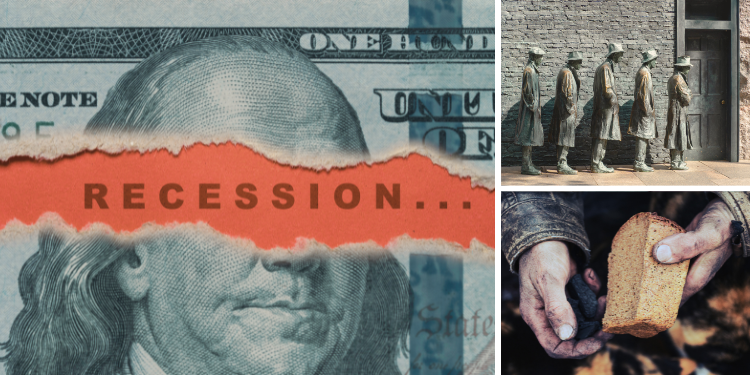
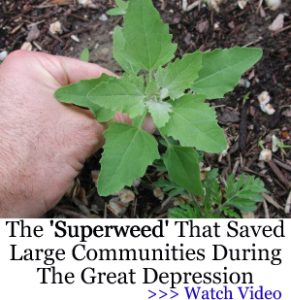

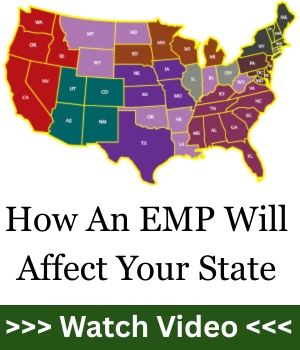

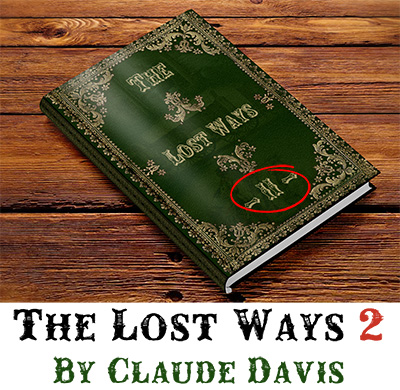
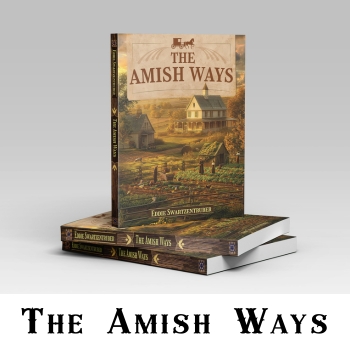
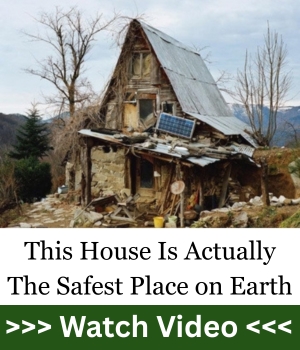
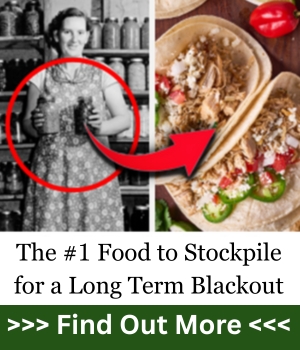






I have seen the parallels between the 1920s and our current financial situation. The recession of 2008 was a wake-up call for my husband and me. We’re doing what we can to be as independent from the system as possible, and this includes getting and staying out of debt.
I see what’s happening in our country today, and I don’t believe that the United States dollar will be the world currency much longer. More than half of the world’s population is using the BRICS system already. It’s a matter of time.
While people did hold mortgages in the 1920s, consumer debt was still very much less than it is today, especially when it comes to credit cards. The charge cards popular with department stores in the 1950s and 60s required full payoff each month. It was a charge card, not a credit card.
It wasn’t until the early 1980s that credit cards became more widely available. And then the march towards permadebt ran rampant among all social classes, not just the well-heeled. And, here we are.
I agree, having no debt is the way to go, if you can swing it. Getting out of debt as soon as possible is a wise course of action, as is making the decision not to amass any more.
Long ago I learned never to debt for wants. That practice has served me well.
There was a big draw after WWI to have people move to more urban areas because of the possibility of better paying jobs and more bells and whistles. Electricity. Indoor plumbing.
And I don’t think one should discount the relief experienced by many when the Great War was over. People wanted to forget the horrors, so little wonder the 1920s were roaring.
Yes, there were runs on banks, and many lost money, in some cases, all they had.
Some who had been well off found themselves penniless and unaccustomed to scrounging for a way to keep body and soul together.
I think many people are in that same situation now. They’re used to handouts from family, friends, or the government. They have never been in a situation where they’re working without a net.
I agree, learning skills to make do with what one has or can build or create will serve well. Easier in some ways if you have a network where skills and knowledge can be combined, but each household knowing at least a smattering of everything can help in those times where your network is not available.
If you are going to keep money in a financial institution, do not use a bank.
Use a credit union instead. Not one has failed even during the great depression because the depositors determine who and how much money to lend for realestate only. No fractional spending etc. & the management has no say in any loans with your money.
Keep some here in the USA & some offshore for best results.
The federal reserved caused the great depression by easy credit inflation the money supply 62% over a few years then raising the interest rate, this is called rowing the economy this allows the elites, banksters etc. to buy companies for pennies on the dollar, they win we lose.
Old cowboy saying. Best way to double your money is fold it and put it back in your pocket.
“What does it profit you to gain the whole world and lose your soul.”
Have your soul prepared.
Overall, good advice. Spreading money across multiple institutions doesn’t insulate people from risk as each depositor is covered for up to $250k – TOTAL – whether in one bank or 50 banks. $250k is the limit.
I believe you are mistaken on your understanding of FDIC coverage. You could have an account in your name for 250K, a joint account with your wife, and a small business account and they would each be covered. Not that this is a problem I have to be concerned about, I don’t have 250K setting in my local bank, just wanting to get true info out there.
The Federal Reserve is not what you think it is. There is no timeline to pay our your money. You can’t just go the bank and get it.
I have to disagree about using bullets as a barter item. Tools, food, medicines, etc., yes. Bullets are possibly arming those that intend to hurt you.
I have bartered bullets for calibers I don’t own. Where I live most are independent in thoughts and actions. Conversations get interesting very quickly. At a garage sale, I have traded them a couple times. Last time I got 2 wool blankets and a cast iron skillet. Together those are easily $150.00. We also talked a bit. I would rather trade them to someone in my swamp who now knows me in the event we have to help each other. If you pay attention to people much you can be a good judge of others on if they are trustworthy or not but that only lasts until an emergency. People always talk about a community when actually I think you should be prepared to be a loner and feel blessed if you happen across some good people. In all honesty none of us **in this country** have had to deal with anything like Haiti, or third world conditions to where you have to eat a dog or cat, or worse. Prepare for you and your household and wait before trusting others. When I have power outage, I am reminded the first and immediate need is water and how to get it clean. I have been working on this. I made a filter from two buckets. I am buying one replacement filter per month to stock up. I have a netting to pour water through to take debris. I boil it first then through the filter. Two five gallon buckets, old t-shirt, panty hose and steel pot to boil. the filter and spigot were the only thing I bought.
In all times good or bad, have your soul prepared.
I have always liked your articles, but this one has a lot of new era misconceptions. They did not practice monoculture in the dirty 30s. My father was 95 when he passed only a few short years ago and lived through the great dust bowl. He told me many stories of that era. There was a 7 year drought and all the wells dried up. It wasn’t possible to irrigate because the wells all went dry and there was no water. People had livestock of all types on their farms as well as gardens. It’s just there was nothing for the animals to eat and many died. The grocery store is a new phenomena and people had small stores, but nothing significant and they received a lot of their food from local farmers in the area. People in cities had debt, but most people on farms did not. They lost their farms because there was no way to grow their gardens, grow their crops, keep their livestock alive or live without water in those extreme areas. The great depression was a culmination of many things. Not just one. Crazy speculation & extreme weather patterns due to mother nature. Not monoculture. I hope this gives you a bit more understanding of what it was like during those times. In Oklahoma, many people lived on land that they homesteaded which they received for free during the Great Oklahoma land rush. There were not loans on that land. They claimed it, staked it and homesteaded it. It was the drought that destroyed so many in that time. It was wall street speculation & bad bankers in the cities that did the rest.
The Worst Hard Time by Egan is a very good history covering part of The Dust Bowl experience. The Federal Guvmint encouraged farmers to buy land on the Southern Plains and dry land farm wheat, and encouraged them to enter loan programs to finance the land and each year’s crop. After several wet years they were producing so much wheat the price crashed and they couldn’t repay the loans. The Guvmint told them to borrow more, then the unusually rainy period came to an end and nobody could make a crop for years. The big monoculture growers were aleady going down, then the dust bowl drought finished off everybody else on the plains. Liberals would go insane if we had a drought like that today, or one equivalent to the 50s drought in Texas. The Time It Never Rained by Kelton is a good fictionalized account of that second dust bowl.
There is only one hundred twenty eight point two billion
dollars in the entire FDIC reimbursement fund.
If you don’t get yours in time of a banking collapse then
you are truly fucked.
I’m not kidding!! Do your due diligence.It’s there’re for
everyone to see.
Have your pay check,pension check,or any other source
of income out of the bank asap.
If you don’t hold it you don’t own it!!!
All of worlds central banks are bringing home their gold.
What does that tells us?? We are headed toward a monetary and financial reset based on a return to the
gold standard.
If you snooze you loose.You’ll get tired of kicking yourself
In the ass.Don’t forget that the wife will bust your balls.
Agreed. The FDIC simply can not cover (insure) all of the bank accounts, that’s been known for years by those who are paying attention; The “elite” brotherhood will be reimbursed long before the average servile working tax payer is. Gold and silver are money, everything else is fiat currency. The US minimum wage in 1965 was $1.25. Those five 90% silver quarter dollars are now worth approximately $33.00 in today’s silver market. Our government has confiscated US minted gold coinage before, I Do not buy US minted bullion, instead go for Canadian Maple Leaf’s, Mexican Libertad’s, or generics.
Totally agree with your idea of buying gold or silver but would suggest that you buy it from a dealer where you can walk in, pay with cash, and walk out with your purchase. Privacy is important if you are concerned about confiscation. This way no credit card, check or name on an account, no trail back to you.
I would encourage everyone to read the post on
LewRockwell.com dated 2/10/25 by Milan Adams.